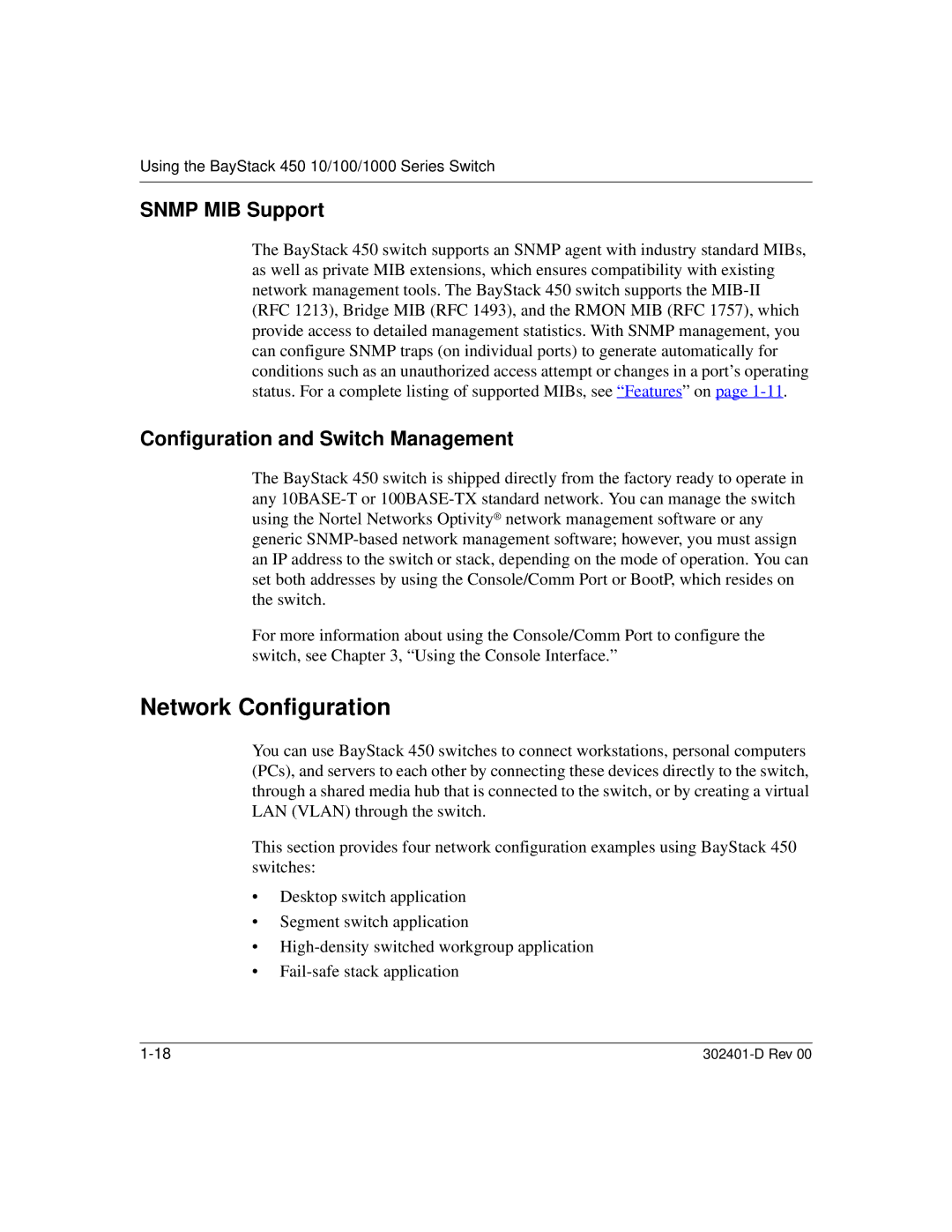
Using the BayStack 450 10/100/1000 Series Switch
SNMP MIB Support
The BayStack 450 switch supports an SNMP agent with industry standard MIBs, as well as private MIB extensions, which ensures compatibility with existing network management tools. The BayStack 450 switch supports the
Configuration and Switch Management
The BayStack 450 switch is shipped directly from the factory ready to operate in any
For more information about using the Console/Comm Port to configure the switch, see Chapter 3, “Using the Console Interface.”
Network Configuration
You can use BayStack 450 switches to connect workstations, personal computers (PCs), and servers to each other by connecting these devices directly to the switch, through a shared media hub that is connected to the switch, or by creating a virtual LAN (VLAN) through the switch.
This section provides four network configuration examples using BayStack 450 switches:
•Desktop switch application
•Segment switch application
•
•
